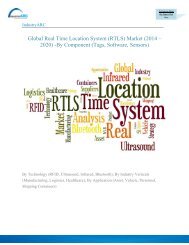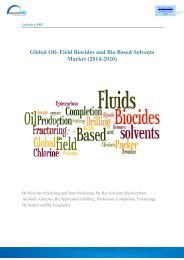Global Electric Power Steering (EPS) Market Analysis and Forecast (2014 – 2020)
Electric power steering (EPS) uses an electric motor to assist during the driving of a vehicle. Sensors detect the position and torque of the steering column, and a computer module applies assistive torque via the motor, which connects to either the steering gear or steering column. Passenger, commercial, light commercial vehicle, sports cars are the different end-user segments of EPS. Manual, hydraulic and electric powered steering systems are the key electric power steering types present in the market currently. Electric steering systems are mechanically less complex with fewer moving parts and no fluids. It is, hence, more reliable as well as simpler for the OEMs and customers too. Fuel economy is the biggest benefit to the end customers due to EPS and is the major driver for this market growth. It is estimated that significant fuel savings of around 0.3-0.4 liters/100km along with reduction in CO2 emissions of 5-7g/km can be attained due to EPS. With electric cars growing in shipments and offering competition to fuel-based cars, EPS systems are the key factors, especially for traditional automotive OEMs to prolong their business.
Electric power steering (EPS) uses an electric motor to assist during the driving of a vehicle. Sensors detect the position and torque of the steering column, and a computer module applies assistive torque via the motor, which connects to either the steering gear or steering column. Passenger, commercial, light commercial vehicle, sports cars are the different end-user segments of EPS. Manual, hydraulic and electric powered steering systems are the key electric power steering types present in the market currently. Electric steering systems are mechanically less complex with fewer moving parts and no fluids. It is, hence, more reliable as well as simpler for the OEMs and customers too. Fuel economy is the biggest benefit to the end customers due to EPS and is the major driver for this market growth. It is estimated that significant fuel savings of around 0.3-0.4 liters/100km along with reduction in CO2 emissions of 5-7g/km can be attained due to EPS. With electric cars growing in shipments and offering competition to fuel-based cars, EPS systems are the key factors, especially for traditional automotive OEMs to prolong their business.
You also want an ePaper? Increase the reach of your titles
YUMPU automatically turns print PDFs into web optimized ePapers that Google loves.
To Enquire About<br />
the Report Click<br />
Here<br />
THE ARC ADVANTAGE<br />
An analytical model lies at the core of our process, ensuring logical consistency<br />
throughout our research. We complement the model with secondary data <strong>and</strong><br />
interviews with industry experts to reflect the latest trends. With our final expert<br />
validation, we provide you with only the most accurate <strong>and</strong> actionable intelligence.<br />
THE ARC PROCESS<br />
Analytical<br />
Method<br />
Base Method<br />
Consolidation<br />
Method<br />
Delphi<br />
Verification<br />
1. Granular<br />
breakdown of<br />
drivers into<br />
factors<br />
2. Validate all<br />
factors in terms<br />
of their present<br />
impact on the<br />
market<br />
3. Assign weights<br />
to these factors in<br />
terms of their<br />
relevance <strong>and</strong><br />
impact on the<br />
market<br />
1. Get a topdown<br />
estimate of<br />
the market<br />
2. Follow it up<br />
with a bottom-up<br />
estimate of the<br />
market<br />
3. Check<br />
forconsistency<br />
<strong>and</strong> new growth<br />
factors that are<br />
relevant over the<br />
next 10 Years<br />
1. Granular<br />
breakdown of<br />
drivers into<br />
factors<br />
2. Validate all<br />
factors in terms<br />
of their present<br />
impact on the<br />
market.<br />
3. Assign weights<br />
to these factors in<br />
terms of their<br />
relevance <strong>and</strong><br />
impact on the<br />
market.<br />
1. Verify the<br />
findings of the<br />
model with<br />
experts from<br />
across the value<br />
chain<br />
2. Verify the<br />
findings with<br />
players across<br />
small <strong>and</strong> large<br />
enterprises<br />
3. Tweak the<br />
model <strong>and</strong> add<br />
new factors<br />
4. Build the<br />
Analytical Model<br />
4. Build the Base<br />
model<br />
4. Build the<br />
Consolidated<br />
Model<br />
4. Finalize the<br />
ARC Model<br />
ANALYTICAL MODEL BASE MODEL CONSOLIDATED MODEL ARC MODEL

















